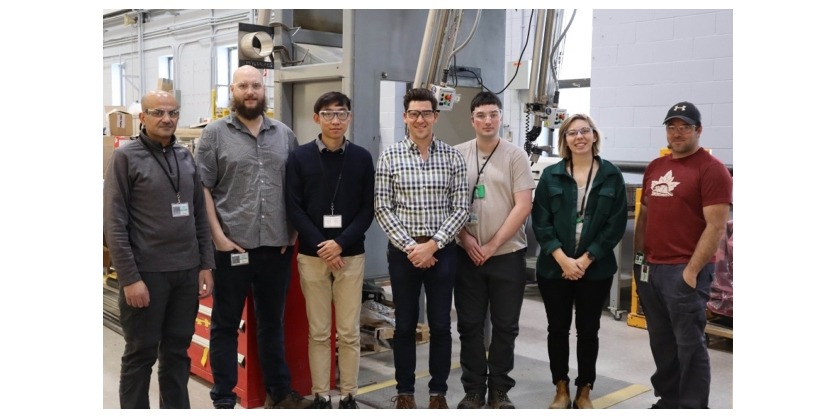Could Space be the Final Frontier for this Novel Robotic Manipulator?
March 11, 2024

CNL researchers designing a field deployable manipulator look to redefine work with radioactive materials
A “hot cell” is the common term for a shielded nuclear radiation containment chamber that allows nuclear operators to safely perform work on highly radioactive materials using mechanical manipulators. The specialized facilities are not only expensive to build, but a rare commodity – two reasons why researchers Scott Read and Kevin McCaugherty of CNL’s Mechanical Equipment Development Branch pitched an idea to grow the capabilities of the hot cell beyond its fixed location.
The idea, referred to as the Portable High Precision Modular Manipulator Cell, is now a multi-year project funded by Atomic Energy of Canada Limited’s Federal Nuclear Science and Technology Work Plan. More simply referred to as the portable manipulator – the new design is catching attention for both its terrestrial and extra-terrestrial application potential.
Whereas a traditional manipulator is manufactured to be permanently installed in a hot cell and is quite sizeable, the field deployable manipulator can be easily packaged, decontaminated, and stored for transport and assembly. The novel design will combine advanced robotics and modern remote monitoring capabilities. This combination leads to another advantage: autonomous operation. Simply put, a conventional hot cell manipulator requires operator input which results in manipulator output; this portable manipulator will be able to do more tasks autonomously through novel control schemes.
“With advancements in machine learning and AI, we can leverage all the development that has gone into simulation environments for industrial robot arms,” says Read. “This means we can plan ahead – create simulations of a work task, plan it in simulation software and generate code that can control the robotic arm, ensuring efficient task execution through really precise motion.”
Precision isn’t all that’s important, though – dexterity is necessary too. “The manipulator has a minimum of six degrees of freedom, or six unique axes that the robot arm can move around. This helps ensure the end effector (or tool) can reach and point in the desired direction when carrying out all of the manipulator’s tasks,” adds Read.
What are these tasks exactly? The team engaged with a variety of CNL experts early in the development of the portable manipulator to identify specific ways a portable manipulator could be used. This consultation led to the team targeting applications which are commonly performed at the early stages of a nuclear decommissioning project.
A key focus is characterization, or the series of tasks to identify what radioactive hazards exist so we can appropriately plan for their safe disposal and the safety of workers. This work includes taking gamma and beta radiation measurements, performing gamma spectroscopy to know which radionuclides are present, as well as taking general contamination swipes to inform an understanding of the loose contamination hazards in the working environment.
The novel manipulator will also be capable of doing visual examinations, so the team is investigating several radiation-tolerant cameras for the design. And core to its impact will be its use of some basic hand tools, like a drill or reciprocating saw and a general-purpose gripper. When it’s time for a tool change, the portable manipulator reaches over to the tool magazine and drops off the tool that is no longer needed. The tool magazine then shuttles this tool to a storage rack before bringing the next tool to the portable manipulator for it to pick up and carry on with the next task.
And what about space applications with its radiation-tolerant design? It’s no secret that Canada has a noted history for making robotics contributions to space missions. Even today, the Canadian Space Agency has been engaged by the NASA-led Artemis Program to provide support with one area of focus being advanced robotics for space missions. Could CNL’s Portable High Precision Modular Manipulator Cell one day be supporting the Lunar Base Camp or Gateway? Guess we’ll have to wait and see!
Related Story
The Canadian Space Economy Could be Worth $40 Billion by 2040
A new report by Deloitte Canada, in collaboration with Space Canada, states that Canada is well-positioned to benefit from the significant economic opportunities that the space sector presents. However, to do so, the country needs to develop a smart, sustained, and well-executed strategy. The report, Reaching beyond: A $40 billion Canadian space economy by 2040, examines the current role of space in Canada’s economy and its potential for growth and further contribution to the country’s prosperity.

